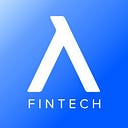Directed Acyclic Graph: What is It?
Apollo is researching practical applications of directed acyclic graph (DAG) which is described as post-blockchain distributed ledger technology.
Steve McCullah, director of business development, said in Aug. 2019:
This technology will put Apollo’s features above the competition. With an expected TPS (transactions per second) of at least one million, Apollo will offer capabilities surpassing anything on the market today.
Directed acyclic graph (DAG) functions as a network of interconnected branches that grows outward in several directions. It solves the problems of scalability, high fees and long confirmation times.
Transactions can be confirmed in order of magnitude faster while remaining decentralized since each node confirms only the previous one.
DAG’s advantages include:
- High transactions per second (TPS)
- Low transaction fees
- Nano transactions and micropayments
- Scalability
Apollo (APL) all-in-one privacy currency combines features of mainstream cryptocurrencies in an unregulatable platform. With two-second block speed, APL is one of the fastest cryptos on Earth. “Apollonauts” use features such as encrypted messaging, smart contracts, decentralized exchange, decentralized applications and decentralized file storage.
Learn more at www.apollocurrency.com
